 The first-gen experience can be an important part of one's identity. The first-gen experience can be an important part of one's identity.
Tags: children/youth, class, education, inequality, cultural capital, first-gen, social mobility, 00 to 05 mins
Year: 2015 Length: 5:57 Access: New York Times Summary: This video and the accompanying NYT article analyze the experiences of students who are the first in their family to attend college (i.e. first-gen students). It addresses the challenges that students face, including not knowing how to network, discomfort in talking with professors, not having parents to help them navigate higher education, not having money to buy appropriate clothes for professional interviews, and needing to work while attending college. In sociological terms, these reflect inequalities in both economic capital (e.g. needing to work) and cultural capital (e.g. not having the knowledge and disposition necessary for navigating professional institutions). The video also mentions positive parts of the first-gen experience, such as knowing how to do their own laundry and other basic skills for independently taking care of oneself, and having empathy for others who struggle. It addresses issues of identity, including how some students actively conceal a first-gen identity, difficulties communicating the experience to family, but also having pride in (and "coming out" as) first-gen. These issues of identity and experience in both college and professional life are insightfully explored in Alfred Lubrano's book, Limbo: Blue Collar Roots, White Collar Dreams. Other resources on first-gen students include this Chronicle of Higher Education report and Social Class on Campus: Theories and Manifestations (Barratt 2011). The video also documents Brown's first conference for inter-ivy first-gen students, organized by the student group 1vyG at Brown, where students shared their first-gen experiences. While the video focuses on first-gen students from ivy-league Brown University, the experiences translate to other institutional contexts as well (I can attest to this as a first-gen student myself!). Submitted By: Paul Dean
1 Comment
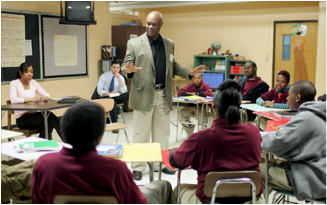 Bunny Colvin asks, "what makes a good corner boy?" Bunny Colvin asks, "what makes a good corner boy?"
Tags: class, children/youth, culture, inequality, theory, bourdieu, cultural capital, institutions, the wire, 00 to 05 mins
Year: 2006 Length: 2:57 Access: YouTube Summary: In this clip from season 4 of The Wire, the troubled youth discuss what makes a good "corner boy" and illustrates how cultural capital works. As demonstrated in the clip (and throughout season 4), they lack the cultural capital of professional settings. For example, they speak out of turn, disrespect authority, and speak inappropriately for the context. But when Bunny Colvin asks the students what makes a good "corner boy," the students come alive and quickly describe the necessary traits: "keep the count straight," "don't trust nobody"; and "keep your eyes open." Their knowledge about, and interest in, working the corner illustrates the cultural capital that the teenagers possess. It is useful in navigating the streets and being a successful member of the drug-dealing gang hierarchy. The issue is that broader society does not value this form of cultural capital, which is possessed more by poor, inner-city children. Instead, society values the kinds of cultural capital that are more common middle-class suburban schools and families. In other words, the problem is not that the boys do not have any skills, but they do not have a certain type of skills. For a complementary example from The Wire, watch the restaurant scene, in which these same children lack the cultural capital necessary for eating at a fancy restaurant. The kind of knowledge and skills necessary for that setting (e.g. knowing appropriate behavioral norms, understanding menu items, being comfortable in that setting) could be helpful in a professional job interview or networking. The different values placed on cultural capital more common among middle-class families illustrate how they are more likely to reproduce their class position, thus reinforcing the class structure across generations. Like the unequal distribution of wealth, or high-quality schools, inequalities in cultural capital help to shape different economic opportunities and mobility. Submitted By: Paul Dean 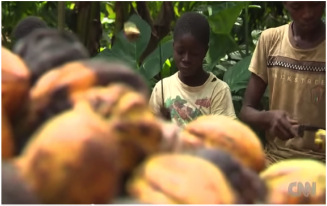 Ten-year-old Abdul earns no wages for his work on a cocoa farm. Ten-year-old Abdul earns no wages for his work on a cocoa farm.
Tags: children/youth, food/agriculture, globalization, inequality, chocolate, cocoa farming, ivory coast, slavery, 00 to 05 mins
Year: 2012 Length: 1:38 Access: YouTube Summary: This video from CNN is a short story about child slavery in chocolate plantations. Most people love chocolate. However, contrary to what many may believe, chocolate does not come from a factory in Switzerland, Belgium, or Italy. At least not to start with. Around 70% of the world's chocolate comes from West Africa, and most of that from the Ivory Coast. These plantations are often in areas where there is little other work, creating a monopoly on opportunity. Lately, more and more people are finding evidence of child slavery on cocoa plantations. In this video, CNN reporters interview several child slaves working on cocoa farms. One of these children is Abdul, a ten-year-old who has been working on the Ivory Coast since he was seven. Abdul says that he earns no money from his work, only food and shelter. Yaku, a sixteen-year-old who also works on the plantations says that he has never been to school. These children work in dangerous conditions, which can leave scars—both physical and mental. Yaku has scars on his legs from machete accidents. CNN says that there is an estimated 100,000+ children in the worst kinds of child labor worldwide. That includes child slaves in the chocolate industry. In the documentary The Dark Side of Chocolate, researchers go undercover and look at child slavery. While child slavery is illegal in the Ivory Coast, it still happens in practice. The plantations where it occurs may supply some of the world’s biggest companies, such as Nestle and Hershey. This video is useful for looking at how Western consumerism affects the world, and how social justice initiatives such as the CNN Freedom Project can help. For more information, check out The Sociological Cinema's other video on the chocolate industry, which explores Marx's concept of alienation, or Kelsey Timmerman's book Where Am I Eating? Submitted By: Abigail Adelsheim-Marshall  Filmmaker compares the life transitions of his grandma and sister Filmmaker compares the life transitions of his grandma and sister
Tags: aging/life course, children/youth, health/medicine, marriage/family, psychology/social psychology, change, college, depression, high school graduation, moving, retirement home, transition, turning point, 06 to 10 mins
Year: 2015 Length: 6:07 Access: YouTube Summary: Sociologists that study the life course emphasize the importance of turning points. The life course refers to the various interconnected sequences of events that take place over the course of a person’s lifetime. Transitions are changes that people experience in different stages or roles of their life; examples include entry into marriage, divorce, parenthood, employment, or military service. These transitions can, but don’t necessarily, lead to turning points, which are marked by long-term changes in behavior that “redirect” a person’s life path. Whether or not a turning point has taken place only becomes apparent after the passage of time, when one can look back and confirm that a long-term change has occurred (e.g., see Elder 1985; Sampson and Laub 1996; Abbott 2001, ch. 8). Rutter (1996) highlights three types of life events can serve as turning points: (1) life events that either close or open opportunities, (2) life events that make a lasting change on the person’s environment, and (3) life events that change a person’s self-concept, beliefs, or expectations. For example, Uggen (2000) examined whether work serves as a turning point in the life course of criminals, and whether age and employment status can explain recidivism rates. In the short film above, a young filmmaker chronicles the transitions taking place in the lives of two family members: his 82-year-old grandmother, Obaa, and his 17-year-old sister, Phoebe. Obaa has recently sold her house and is moving into a retirement home; Phoebe is graduating high school in two weeks and will soon be heading off to college. Both women experience depression. As viewers, we don’t know whether these transitions will lead to turning points in the lives of Obaa or Phoebe. Viewers are encouraged to consider how these life changes constitute a transition, using Rutter’s (1996) criteria above. Also, how might mental illnesses, such as depression or dementia, intersect with the ability for a transition to result in a turning point? How might transitions help or hinder people with mental illnesses? What about a person’s age? Do viewers believe that Obaa’s or Phoebe’s age will play an important role in their transition or potential turning point? What unique and/or similar challenges and/or opportunities will each woman face as they transition into a new stage of their life? Submitted By: Anonymous 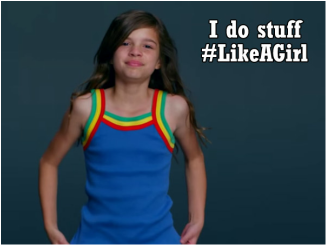 What does it mean to run "like a girl"? What does it mean to run "like a girl"? Tags: children/youth, gender, marketing/brands, sports, femininity, 00 to 05 mins Year: 2014 Length: 3:18 Access: YouTube Summary: In the beginning of this video, teenage girls and boys are asked to perform certain actions "like a girl." For example, they are asked to run like a girl and throw like a girl. Both the girls and boys adopt stereotypical behaviors. Then younger girls are asked to illustrate these actions, but they perform as they normally would (e.g. running as fast as they can). Both the teenagers and younger children are asked to reflect on what it means to do something "like a girl" and if it is a good or bad thing. They offer very insightful comments and come to acknowledge the negative connotations of doing something "like a girl." Finally, they offer alternative and positive meanings for doing something like a girl, arguing that it is a natural thing to be a girl and to do things as a girl. Along the way, captions (from the corporate sponsor, Always) note that a girl's confidence drops during puberty, and that we must make "like a girl" have positive meanings. The clip is an interesting way to engage a common expression, that is often taken for granted, and to show how cultural meanings get assigned to gender in a way that is very harmful. Specifically, it shapes how meanings of sport, athleticism, and physical activity are gendered, and suggest how they lead to certain gender inequalities. The clip can also be explored from an economic sociology perspective in terms of branding and marketing. This sort of advertisement is outside the traditional form of advertising, but is an example of a growing trend in which corporations address social issues in their communications as part of their branding strategy. For another example, see this Dove Evolution commercial and a critical analysis of it. Similarly, viewers might further reflect critically on Always' depiction of gender, femininity, and girls' bodies in this ad. Thanks to Abi Horvat for suggesting this clip! Submitted By: Paul Dean 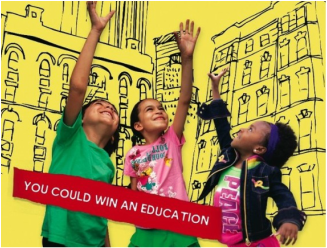 Who is to blame for students failing in school? Who is to blame for students failing in school? Tags: children/youth, class, education, inequality, ideology, individualism, meritocracy, sociological imagination, 00 to 05 mins, 61+ mins Year: 2010 Length: 1:37 (full film is 81:00) Access: YouTube Summary: This extra is from The Lottery, a documentary that examines the controversy around public schools, charters schools, and the educational reform movement. It follows the lives of four families in New York City who applied to the lottery to enter one of the best charter schools in the city. This short clip features person-on-the-street style interviews, where everyday people describe their views on why students don't succeed in schools (or watch the full film). Some of the responses include: "the only thing from stopping you from making it is your own self ... you can't blame the system. You blame yourself"; "the problems with our educational system are cultural"; "in one city you can have garbage schools up in our neighborhood, and then down there, amazing schools. and you can't tell me that's not race-based"; "if my school had been better, then I believe I wouldn't be on the streets." Viewers can be encouraged to consider which of the response reflect the sociological imagination, as compared with purely individualistic explanations. The clip could also be used to examine the role of ideology in American society. Individualistic explanations of schooling failures reflect the ideology of the American Dream, in which anyone can succeed if they work hard enough (and that the US functions as a meritocracy). This strong form of individualism serves to reinforce schooling inequalities by shifting the blame from structural forces (e.g. the distribution of school funding, class inequality) to individuals (children or their parents). This ideology obscures the reality, as shown in this Oprah clip and this mini-documentary, that dramatic inequalities in our public school system lead to different outcomes for students based on class, and often race. As the full film shows, thousands of students try to opt out of the failing public school system by entering the lottery, but only a small number will win the arbitrary process. On the other hand, wealthier families can purchase homes in better school districts or send their children to private schools; while winning the lottery is entirely by luck, the class system and educational funding are not. Submitted By: Paul Dean  Why do siblings have such different economic & social outcomes? Why do siblings have such different economic & social outcomes? Tags: children/youth, class, economic sociology, inequality, marriage/family, family inequality, parenting, pecking order, siblings, 61+ mins Year: 2013 Length: 75:00 Access: no free online access (trailer here) Summary: In The Pecking Order, sociologist Dalton Conley explains how inequality occurs among adult siblings within families. Drawing on studies that look at hundreds of families, Conley shows that, rather than genetics or simple birth order, a variety of factors constitute a "pecking order" within families. The findings are well illustrated in Mistaken for Strangers, a 2010 documentary on the rock band The National. As noted by the filmmakers, "Matt, the lead singer of the critically acclaimed rock band The National, finally finds himself flush with success. His younger brother, Tom, is a loveable slacker--a filmmaker and metal-head still living with his parents in Cincinnati. On the eve of The National's biggest tour to date, Matt invites Tom to work for the band as a roadie, unaware of Tom's plan to film the entire adventure. What starts as a rock documentary soon becomes a surprisingly honest portrait of a charged relationship between two brothers, and the frustration of unfulfilled creative ambitions." In the film, Tom does not have an organized agenda for the movie’s plot, which leads him to struggle with both himself and his brother Matt. Because of his drinking, Tom hardly fulfills his crew duties, which creates conflict and tension between the brothers. The crew finally fires him in the middle of the tour. Tom returns to his parents’ home heartbroken and frustrated. He wonders why he and Matt are so different, so he interviews his parents about their opinions. His father focuses on the fact that Tom “failed” as he does not have a “prestigious” career and live with his parents, in comparison to Matt who has been very “successful.” His mother on the other hand describes Tom as someone who was a difficult child, who cried and never completed tasks. However, she mentions that she was always hopeful of him to be successful because he is “the most talented, skilled one.” This highly rated documentary proves her intuition. Although they grew up in the same context with the same resources and parents, what made Matt and Tom ranked differently in the social ladder? The family interviews of Tom reveals that there is a clear “pecking order” between the siblings in Berninger family. This documentary turns out be an excellent case for understanding inequalities between siblings and within families. I asked my students to first read three chapters of The Pecking Order and reflect on their own experiences with their parents and siblings. Then, I show the documentary and asked them to explain the sources of the inequalities between the siblings. Submitted By: Nihal Çelik 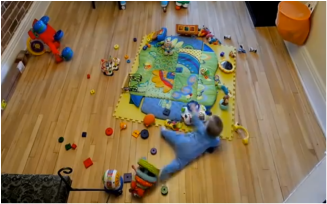 This baby is engaged in what Mead calls "pure play." This baby is engaged in what Mead calls "pure play." Tags: children/youth, psychology/social psychology, theory, game, george herbert mead, I, play, pure play, the self, subtitles/CC, 00 to 05 mins Year: 2009 Length: 2:39 Access: YouTube Summary: In many of my classes, I have students explore George Herbert Mead’s discussions regarding the genesis of the self. Although the phases of play and game seem to be very well spelled out, I like to see just how well students can actually identify them and use that as a chance to explore what they may look like in the actual activities of others. In the classroom, I solicit example stories of children’s behaviors and activities, and we have fun exploring them and their variations in some depth. Since it is not as well spelled out in Mead’s discussions, students typically find it more difficult to grasp the idea of “pure play,” which precedes and helps to better develop the play and game of older individuals. This difficulty is often confounded by a common misunderstanding I’ve discovered among students who have previously been taught or read about Mead’s ideas. Specifically, students have indicated an understanding that “imitation” is the first thing babies do on the road to self genesis. So, in addition to exploring Mead’s lengthy assertion that a baby/child cannot imitate until after they have begun to develop a sense of self (until after they develop at least a rudimentary ability to play), I encourage students to give concerted attention to the engagement of “pure play.” This clip (which was submitted to me by a student) is an excellent example of what Mead referred to in various places as pure play: as those attitudes and activities which are not oriented to others, are not part of the construction of meaning with others, but which emerge from an unsocialized ‘I’, and, as Mary Jo Deegan emphasizes, emerge from a stimulus that calls out a detached act. The time lapsed video very clearly shows how a continuous and random shifting of focus expresses itself as the baby moves from stimuli to stimuli. From here the conversation can move to what a parent would do if they were in the room: helping the child learn to connect response and stimuli by acting as though the child were making meaningful choices and channeling/directing the child’s attention. In addition to the concept of pure play, it would seem very appropriate as an example of a human who is not yet able to treat themselves as an object and is acting only as a subject in the environment. (Note: A longer version of this post originally appeared on The Society Pages.) Submitted By: Timothy B. Gongaware, PhD 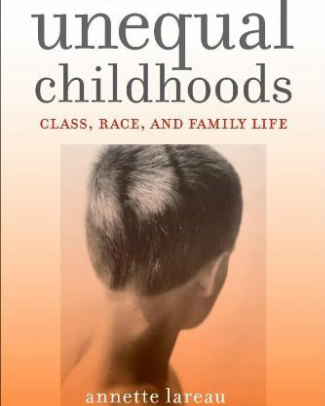 Kids' exposure to language can reproduce class inequality. Kids' exposure to language can reproduce class inequality. Tags: children/youth, class, culture, discourse/language, education, inequality, marriage/family, annette lareau, child-rearing, 00 to 05 mins, 06 to 10 mins Year: 2011, 2014 Length: 8:25; 0:57 Access: YouTube (8:25) New York Times (0:57) Summary: In her book, Unequal Childhoods, Annette Lareau describes how different child-rearing strategies in upper-middle class and poor/working-class homes reproduces class inequality. The way that parents use language with their children is one of several dimensions of family life that help to reproduce this class inequality (the variety of differences are illustrated in our previous post). Lareau found that in upper-middle class homes (through a process she calls concerted cultivation), children are exposed to wider vocabularies, taught to contest adult statements, use language in extended negotiations with parents, and learn through a combination of reasoning and directives. Comparatively, in working-class and poor homes (through the accomplishment of natural growth), children are exposed to fewer words, rarely question or challenge adults, learn more through directives, and generally accept the directives they are given. The first video supplements these findings in how language use varies across class. Todd Risling provides commentary on his study conducted with Betty Hart and published in their book, Meaningful Differences in the Everyday Experiences of Young American Children (1995). They recorded the number of words spoken to young children in welfare-supported homes, working-class homes, and white-collar professional homes. Their findings showed that, on average, children in professional homes were exposed to 1500+ more words per hour than children in welfare-supported homes. So after 1 year, this class difference led to an 8 million word gap, and by age 4, this produced a total gap of 32 million words. In addition to these variations in vocabulary and syntax, when exposed to more words, children were also more likely to hear more positive and affirmative statements, thus promoting better emotional outcomes. Furthermore, these levels of talking are strongly correlated with standard IQ scores. Their study provides quantitative support for class differences in vocabulary and emotional development, while Lareau's qualitative study shows the ways that children learn to use that language (which will later help them in professional contexts) and develop a sense of entitlement through these interactions with adults. Together, these differences help to provide middle-class children with advantages in educational and occupational settings. The second video briefly discusses a technology and strategy that can help address this inequality in language use. The child wears a small digital language processor that records interactions with the child, uploads the data to the cloud, and is then used to give feedback on how to incorporate language in everything the family does during the day. Viewers might be encouraged to consider other programs and strategies for addressing the language gap across social class. Submitted By: Paul Dean 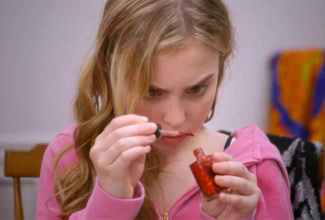 Katie fakes her period and receives a "first moon" party. Katie fakes her period and receives a "first moon" party. Tags: bodies, children/youth, commodification, consumption/consumerism, gender, health/medicine, marketing/brands, sex/sexuality, commercial, humor, menstruation, 00 to 05 mins Year: 2014 Length: 2:20 Access: YouTube Summary: The company HelloFlo has distinguished itself with its innovative marketing of feminine hygiene products, as well as a lively blog and the informative “Ask Dr. Flo” column. This advertisement portrays an adolescent girl who is impatient for the arrival of her first period. At the start, we see her decorating a clean pad with red nail polish. Her mother discovers the pad and pretends that she has been duped. The mother then concocts an extravagant revenge plot in the form of a “First Moon Party,” even though she knows the daughter has yet to have a period. While the advertisement enlists humor to defuse discomfort and embarrassment, the resulting comedy treats male and female characters inequitably and relies upon familiar tropes of conniving girls and devious women. For example, the mother deceives her daughter and exposes her to unwanted attention from men and boys. Grown men do imbecilic things and inspire eye-rolling, while the girl, the supposed protagonist, does something adolescent—after all, she is an adolescent—and suffers punishment. While in the past, a girl might have been daunted by the secrecy and shame surrounding menstruation, here she is discomfited by a denial of privacy, as others take over her rite of passage (one she herself has yet to undergo). The narrative closure comes when the girl admits to her lie and asks whether she will be grounded. Her mother reveals that she has already punished her with the party and then gives her a “period starter kit” as a gift. The advertisement concludes by giving the punchline to a male partygoer who awaits the flow from a sluggish ketchup bottle; he advises another young girl, “Sometimes you just gotta wait.” The ad is framed as a parody, but given the delicate and gendered subject matter, questions arise. How and when can humor dismantle convention? Who is the protagonist? Toward whom is this spot directed? Who is relieved of embarrassment? And to what end? Note that The Sociological Cinema has previously explored how the topic of how menstruation gets handled by the media here and here. Submitted By: Rose Marie McSweeney |
Tags
All
.
Got any videos?
Are you finding useful videos for your classes? Do you have good videos you use in your own classes? Please consider submitting your videos here and helping us build our database!
|
 RSS Feed
RSS Feed
